The most beautiful and unpretentious plants for the home
Indoor plants add coziness to the room. They are capable of producing oxygen, purifying the air and simply giving a good mood. However, for many, the cultivation of indoor flowers is a real problem: the conditions in the apartment are not the same, or there is simply no time to take care of them. However, there are some of the most unpretentious plants that even an inexperienced beginner can grow.
Content:
- Anthurium
- Abutilon, or indoor maple
- Elegant and unpretentious fuchsia
- Begonia
- Fat woman (crassula "or money tree")
- Hardy spurge
Anthurium
The most "tenacious" plants are deservedly recognized cacti... However, not everyone likes their thorns. Some people want to diversify the atmosphere with delicate flowering plants. These plants include anthurium... People call it "male happiness". It is given to men, which is also a sign of unpretentiousness, since men rarely try to care for home flowers.
The most unpretentious plants for the home should, first of all, be easy to care for.
However, any flower needs at least minimal maintenance. It needs to be watered sometimes, dust off and replanted when the pot becomes cramped. Anthurium is one of the varieties of evergreen lianas. It has dark green leaves and dense red flowers that resemble an ear. The leaves are most often heart-shaped or spatulate. The flower looks very interesting and can bloom all year round if it has enough light.
Anthurium care is quite simple:
- The plant loves light, but does not like direct sunlight. It also grows in the shade, but it will bloom worse.
- As a tropical plant, anthurium loves warmth. However, this is not a problem for apartments with heating. The main thing is that the temperature in the room does not fall below 20 degrees.
- Water the anthurium in small portions. He loves moisture, but in moderation. Does not require frequent watering. It is enough to make sure that the soil in the pot does not dry out.
- Anthurium loves moisture. Therefore, if the air in the apartment is dry (especially during the heating season), the leaves can be periodically sprayed.
- Transplanting is carried out "on demand", that is, when the plant has grown too much for a small pot. Be careful with clay pots, as anthurium roots grow into them easily.
Also note that some types of anthuriums are very moody. Not all of them are suitable for simple home growing.
Abutilon, or indoor maple
Beautiful, brightly blooming indoor maple became popular among flower growers precisely because of its unpretentiousness. It blooms for a long time and does not require special skill in care. This plant belongs to the mallow family, and it is called maple because of the characteristic shape of the leaves.
The name translates literally as "giving a shadow". Under natural conditions, this plant grows to an impressive size. However, some varieties of abutilon can grow up to 2 meters in an apartment even at home with minimal maintenance. The flowers are like bright large bells and are constantly being updated. Such a flower will be an excellent decoration for both an apartment and a balcony or terrace.It also grows and branches well outdoors.
Due to its ability to branch quickly, abutilone is excellent for landscaping.
You can cut off shoots for reproduction within a few months after planting. Many endow this small tree with magical properties. For example, it is believed that abutilone relieves its owner of heavy thoughts, improves mood. It is recommended for those who are prone to depression and melancholy.
Abutilon care includes only a few basic points:
- Homemade maple loves light. If provided with lighting, it will bloom all year round. In the shade, abutilon will not die, but you can never wait for flowering. This plant is perfect for growing on south-facing windows.
- Abutilon does not like heat and cold, but apartment conditions are considered optimal for him. In spring and summer, it can be taken out onto the balcony if there are no drafts.
- Watering abutilone should be abundant, but not often. If something is wrong with watering, the plant will let you know by dropping the leaves. In winter, watering is reduced.
For those who are just starting out in floriculture, abutilon will be an excellent option. He rarely gets sick and grows well in almost all conditions.
Elegant and unpretentious fuchsia
For owners of little-lit apartments, shade-loving fuchsia is suitable. This bright, beautiful flower will decorate any room. Fuchsia has many varieties and colors. It grows quickly and blooms for a long time.
Fuchsia blooms beautifully and luxuriantly both at home and outdoors. It is for this reason that the plant is so fond of women. Fuchsia leaves are green with a slight red tint. The flowers resemble small bright cups with curved edges.
When fuchsia fades, it produces small fruits that are also edible.
Fuchsia can be cut into different shapes. Different types of this plant differ not only in appearance, but also in flowering time. You can collect a whole collection of fuchsias.
Fuchsia care rules are standard:
- The optimum temperature for fuchsia is 18-25 degrees. In apartment conditions, she feels great. Even in the heat of summer, it will grow and bloom well if you do not leave it in direct sunlight.
- It is best to plant fuchsia in a ceramic pot. It does not heat up as quickly as plastic, which avoids overheating the roots in extreme heat.
- Fuchsia feels good both in the light and in partial shade. The only thing that is destructive for her is bright direct sunlight.
- Watering is required when the soil in the pot is dry. It is better to water infrequently, but abundantly. To soften tap water, bottle it and let sit.
- In summer, in the heat, the leaves of the plant should be sprayed with water. This is not required in winter and autumn.
If your fuchsia has stopped blooming, it may need time to rest. In winter, put it in a cool place with a temperature of 5-10 degrees. Growth and flowering will stop, the flower will rest.
Begonia
Beauty begonia is considered by the people not only as a decoration of the house, but also as a filter of negative energy. It brings good luck to the owners and protects from the surrounding negativity. Begonia gets its name from Michel Begon, who first described this plant. Begonia began to be used for decorative purposes a long time ago. The most unpretentious species is tuberous begonia.
She not only produces bright flowers, but also does not require any special effort to grow.
In their natural environment, begonias can be found in the tropics and subtropics. They love warmth and high humidity. There are a lot of begonia varieties. It can be a small indoor flower or a very vigorous shrub. Flowers, depending on the variety, resemble roses, carnations, camellias. Shades from pink to scarlet.
In order for begonia to grow and bloom, you need to follow a few simple rules:
- Despite the fact that begonia loves moisture, from its excess, it begins to hurt. Avoiding this is quite simple: just make sure that the water in the sump does not stagnate. Tuberous species hibernate in winter, so they do not need watering at all at this time.
- For good flowering begonias need light. It will be enough to be scattered lighting... In winter, begonia rests in the shade.
- You need to transplant the flower as needed. If the roots are already visible on the soil surface, then the pot has become small. You need to purchase a larger capacity. The transplant is carried out in a standard way. When transplanting, you can cut off dead roots.
- Begonia loves moisture, but you shouldn't spray it. It is better to place the flower in a large tray of water on a small elevation.
Begonia rarely gets sick, but if the leaves begin to turn yellow, this may be a sign of improper watering or the appearance of pests. It is recommended to replace the soil, and treat the roots with a solution of potassium permanganate.
Fat woman (crassula "or money tree")
It is popularly believed that this small tree brings wealth to the owner. It is a symbol of wealth and prosperity. Feng Shui supporters believe that it is imperative to have such a plant at home. The fat woman is so unpretentious in care that even the laziest grower is unlikely to wither away. The plant really looks like a small tree. Its shoots are rather thick, brown, and the leaves are small dark green fleshy with a glossy sheen.
When well cared for, this plant blooms in pink, white or blue flowers.
Like most plants, the period of active growth and flowering in the fat woman falls on summer and spring. In winter they rest. To fat woman has always been beautiful and well-groomed, it needs to be periodically turned in different directions towards the light.
Houseplant care is standard. Moderate watering and lighting will help the bastard grow and bloom. Problems can arise with the following care errors:
- Abundance of moisture. If you water the jellyfish too often, the roots will inevitably begin to rot. In this case, the lack of watering is not as harmful as its excess. However, even in this case, the flower can be saved. It is necessary to dry the soil and treat the roots with disinfectants.
- Lack of lighting. The plant does not die from a lack of light. But in the shade, its trunk stretches out, and it takes on a not very beautiful shape.
- Insufficiently humid air. If the flower begins to dry out, then the air in the apartment is too dry. This can be corrected by exposing the fat woman to fresh air during the warm season. Alternatively, you can simply spray the leaves.
Even a beginner can raise an unpretentious fat woman at home. It is also easily grown in offices where flower maintenance is rarely done. Problems and diseases most often appear with improper watering.
Hardy spurge
Species and varieties milkweed a huge variety. Among other things, this plant is considered a true leader in survival. He is able to grow well in almost any conditions. Some types of milkweed are very similar to cacti.
However, it must be remembered that all types of milkweed are poisonous.
Its juice contains a substance called euphorbin. It can irritate the skin and cause severe burns if it comes into contact with mucous membranes. It is better to care for milkweed with gloves and keep it away from children and pets.
Euphorbia is an ornamental plant that does not require frequent watering, an abundance of light, or any special temperature conditions. The flower got its name because of the white color of the juice that flows out when the leaves or stem are damaged.
There are few rules for caring for a plant:
- Euphorbia tolerates any humidity well. But in the cold season, you should not put it close to the battery or leave it in a draft.
- Euphorbia does not require frequent watering. It is enough to water it once a week during the hottest time.In the cold season, one watering every two weeks is enough.
- Not all owners feed euphorbia. But if the leaves on the plant have noticeably turned yellow and began to fall off, you can use fertilizer for cacti. Such feeding will bring the euphorbia back to life.
- It is necessary to transplant the spurge as it grows, about once every 2-3 years. When doing this, use gloves and be careful.
- To prevent the spurge from stretching and losing its appearance, the top must be trimmed. This is done in the summer. Also, do not forget to remove dry shoots.
Euphorbia has healing properties. For example, they treat edema and rheumatism. However, do not forget that the flower is poisonous. Dosages should be moderate.
More information can be found in the video:




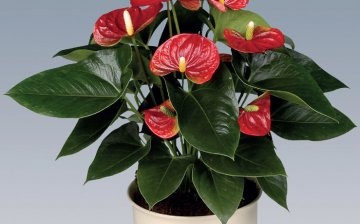
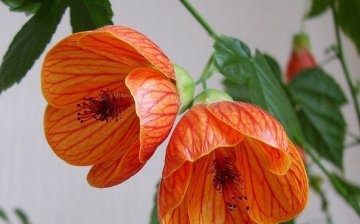

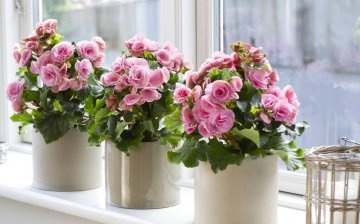
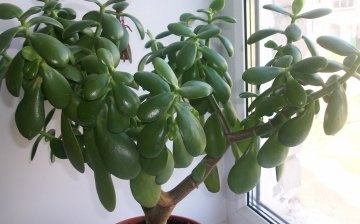









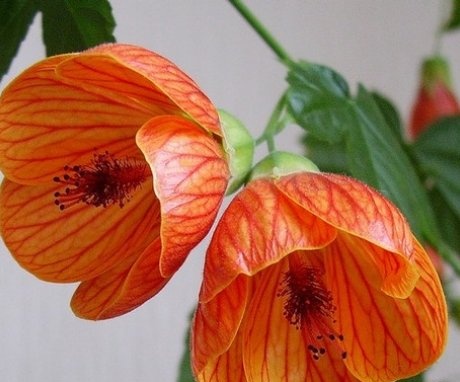
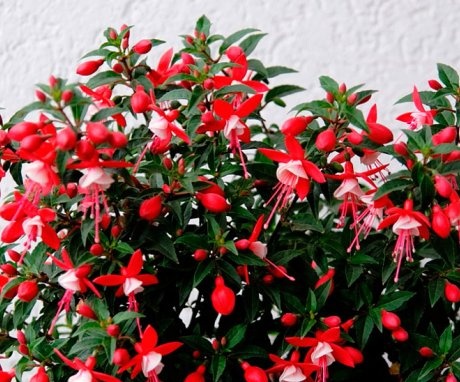



I prefer indoor plants like the money tree and different types of cacti. Geranium and pike tail, as it is popularly called, also grows well. These plants do not take a lot of time to care for them and are even useful for people.
Many of these indoor flowers are well known to me and they are really unpretentious, but still, special conditions must be observed. Monitor humidity and light, fertilize periodically and prune.